Protocol Architecture
The Fiet Protocol is built on a sophisticated architecture that seamlessly bridges traditional finance and decentralised finance (DeFi). This page provides a comprehensive overview of the protocol’s architectural components, data flows, and system interactions. Fiet’s architecture is designed around three primary pillars: verification, commitment, and settlement. The protocol uses zero-knowledge proofs (zkTLS) to verify off-chain liquidity while maintaining privacy and security.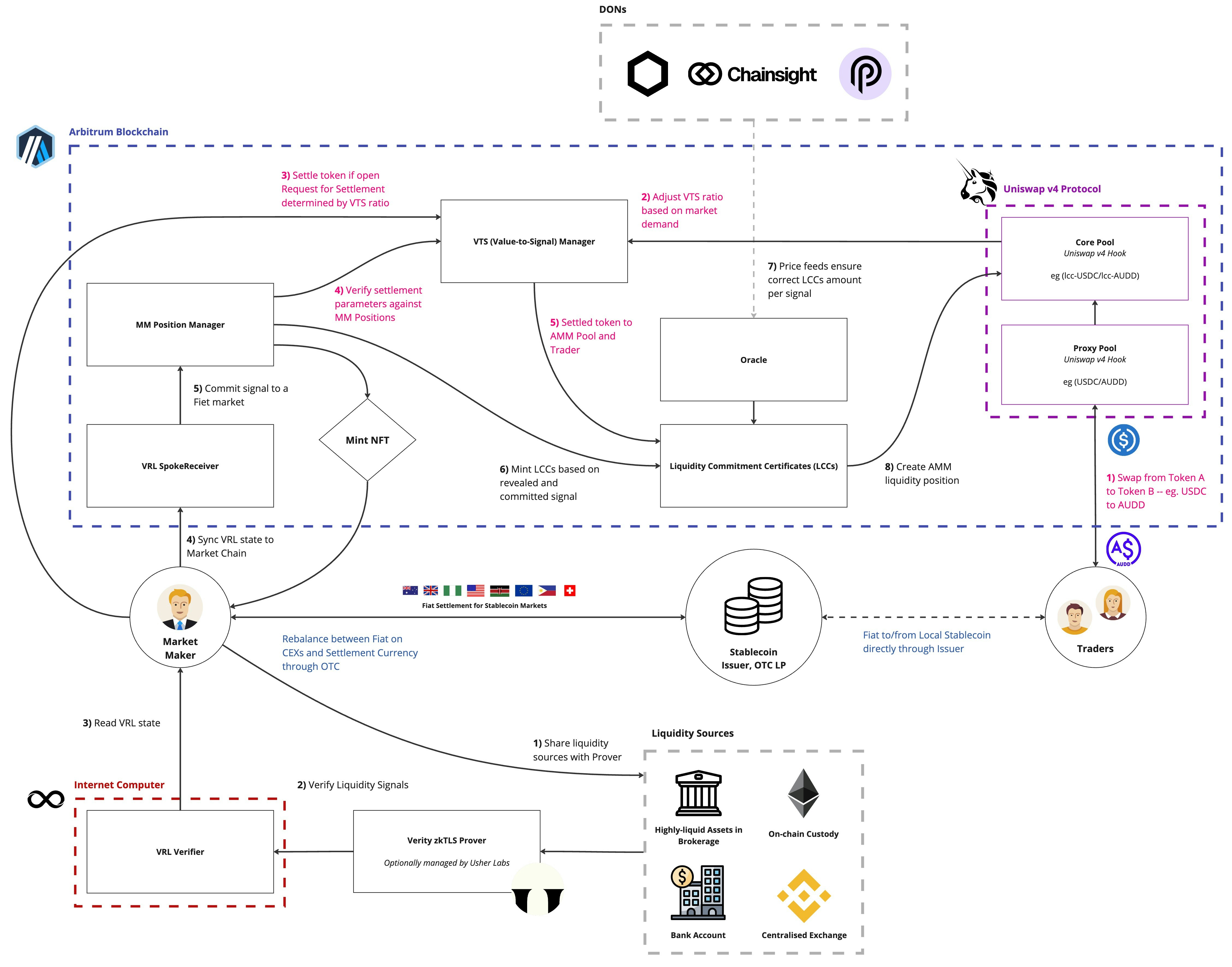
Fiet Protocol - Protocol Architecture Diagram
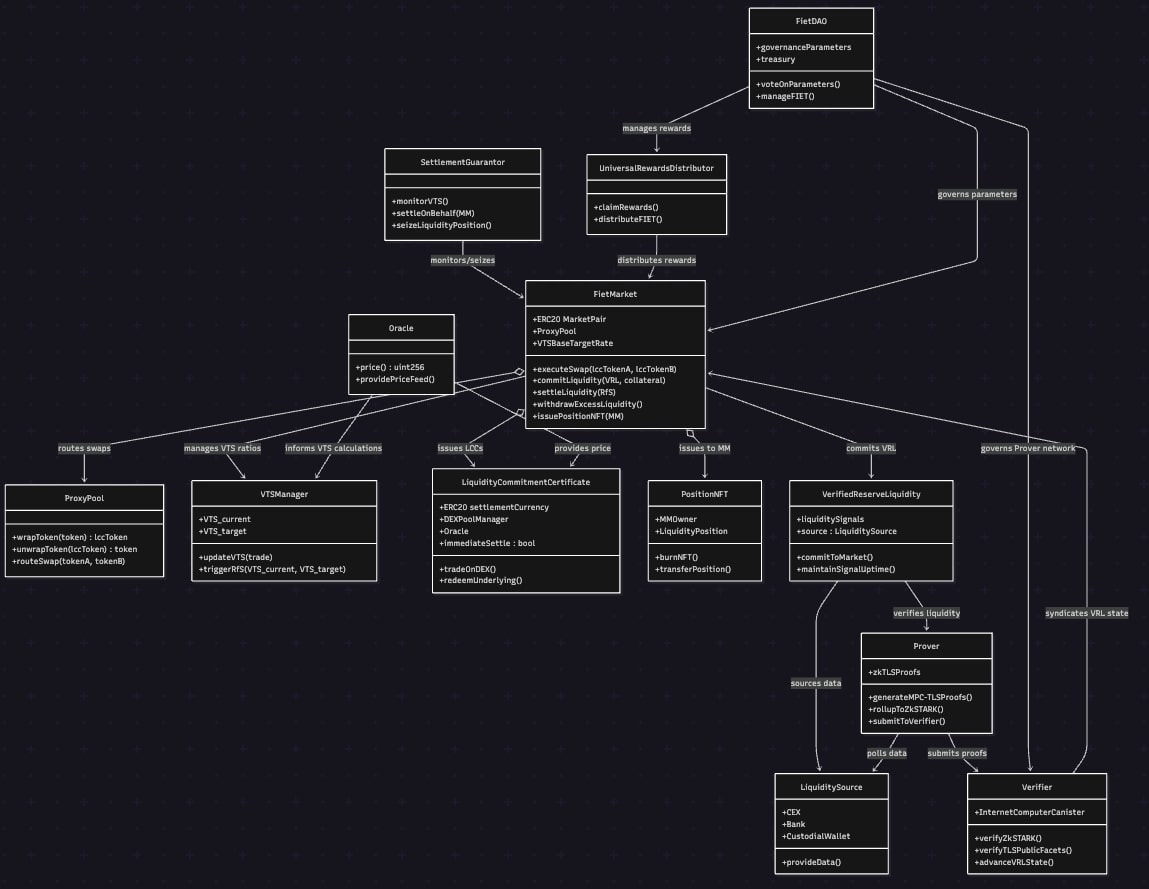
Fiet Protocol - Component Diagram
Commitments Architecture
Liquidity Commitment Certificates (LCCs) form the backbone of Fiet’s liquidity infrastructure. This architecture shows how commitments are created, verified, and managed: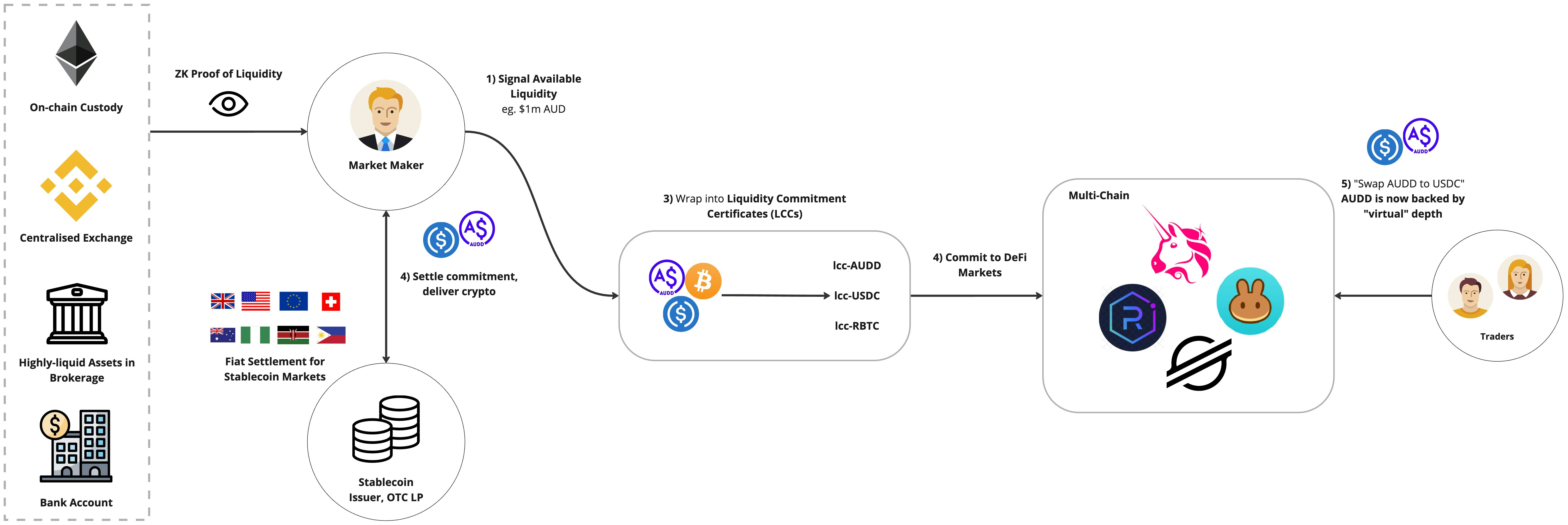
Fiet Protocol Commitments Architecture
Liquidity Flow
Understanding how liquidity flows through the protocol is crucial for participants. This annotated diagram shows the complete liquidity lifecycle: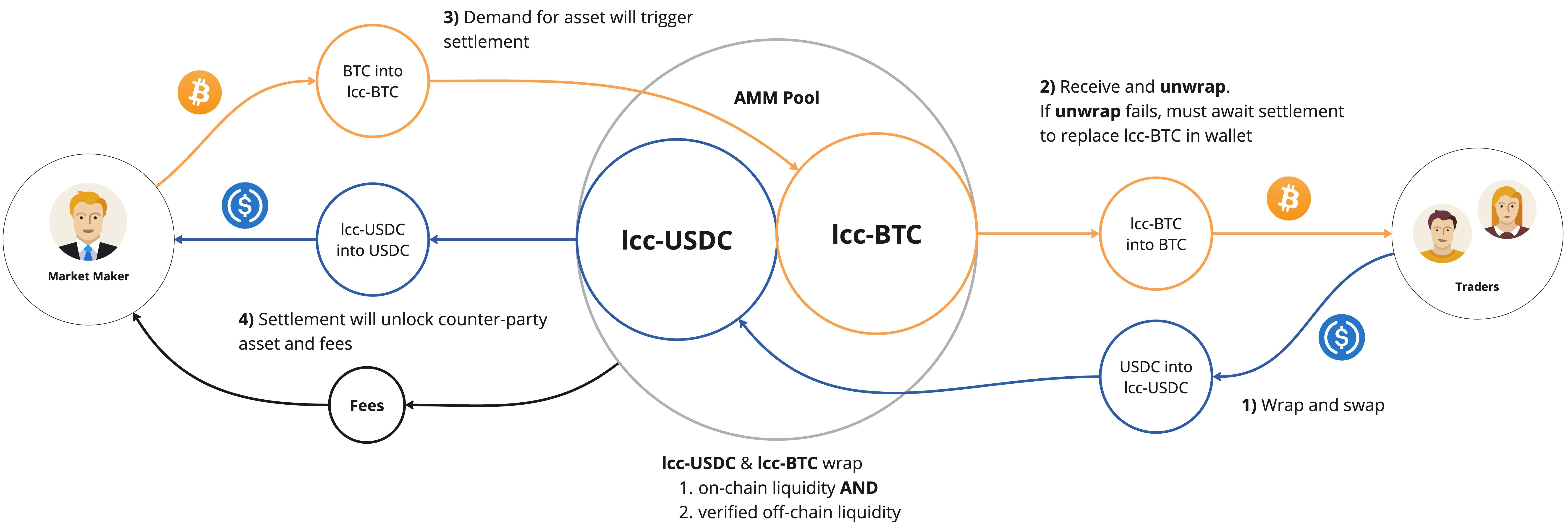
Fiet Protocol Liquidity Flow (Annotated)
Participant Workflows
Market Makers
Market makers follow a specific sequence to provide liquidity to the protocol: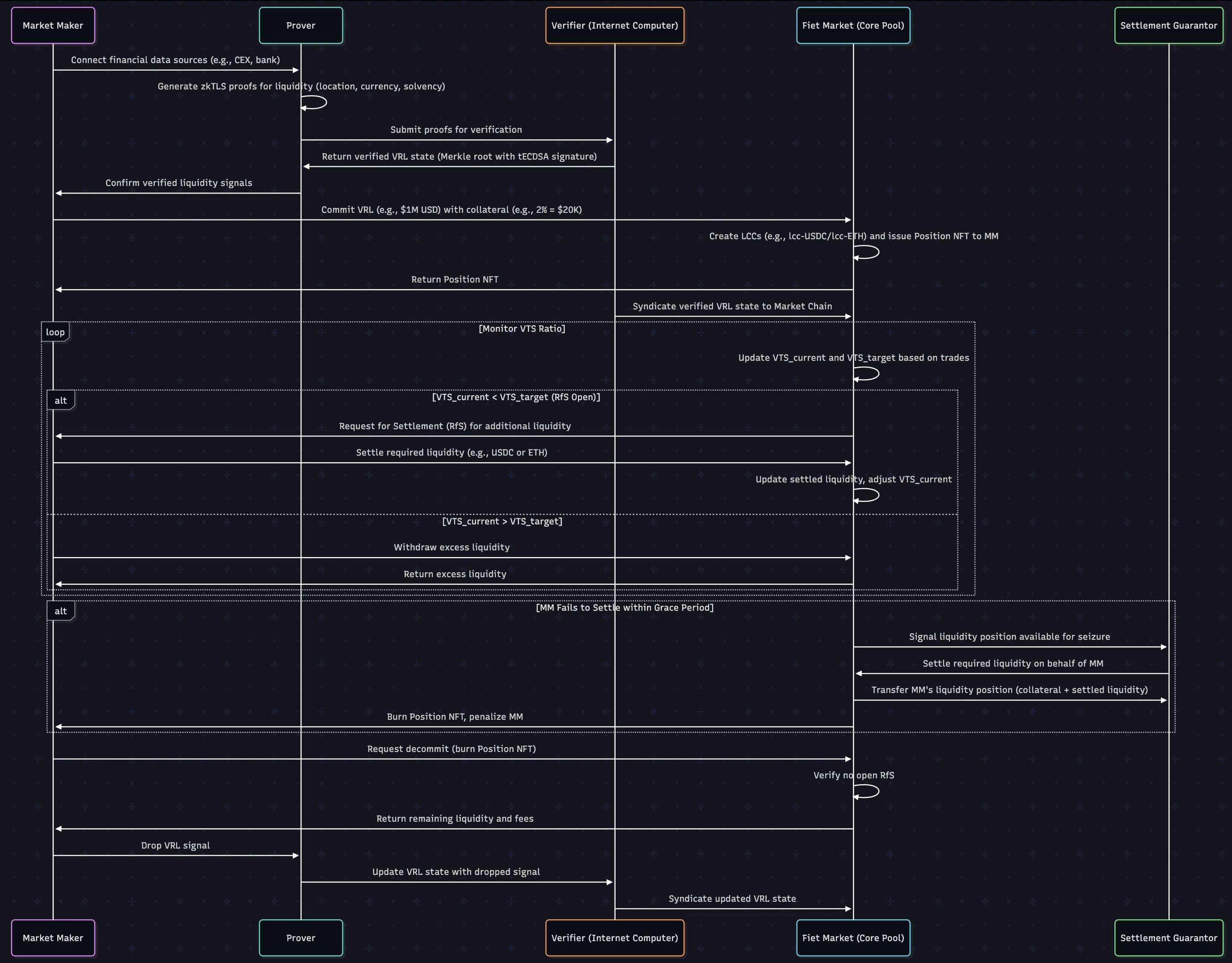
Fiet for Market Makers - Sequence Diagram
Traders
Traders interact with the protocol through a streamlined process: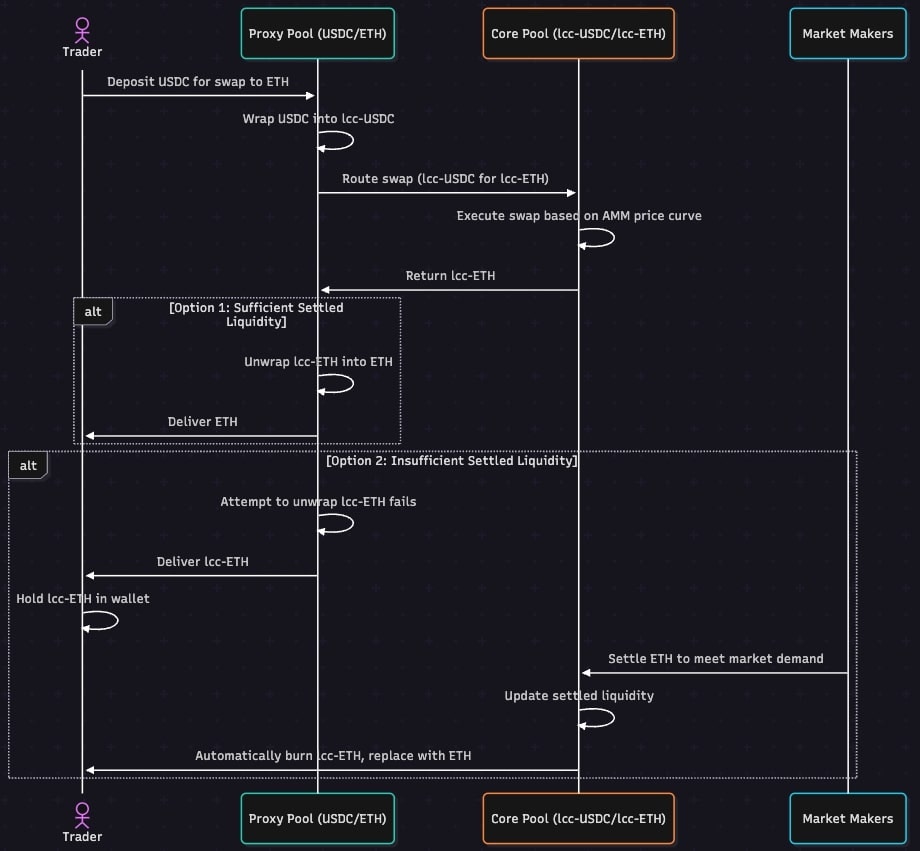
Fiet for Traders - Sequence Diagram
Provers
Provers play a crucial role in verifying liquidity commitments: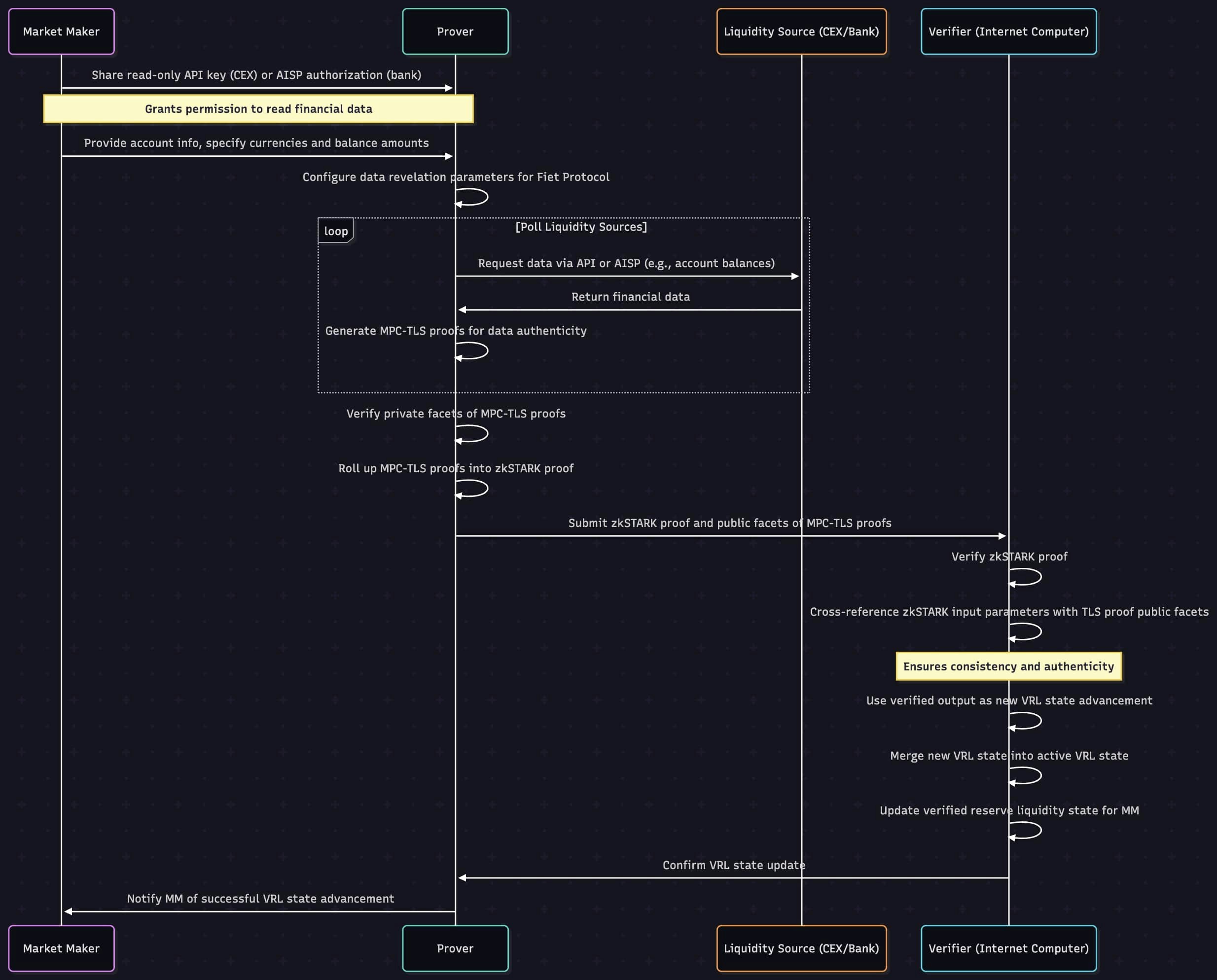
Fiet for Provers - Sequence Diagram
Key Architectural Principles
1. Zero-Knowledge Verification
- Uses zkTLS to verify liquidity without exposing sensitive financial data
- Maintains privacy while ensuring trust and transparency
- Enables verification of off-chain assets
2. Dynamic Liquidity Management
- Liquidity is committed but not locked until settlement
- Market makers retain flexibility while providing market depth
- Settlement occurs only when market demand requires it
3. Guaranteed Continuity
- Settlement Guarantors ensure market stability
- Automatic fallback mechanisms prevent market disruption
- Risk mitigation through multiple layers of protection
4. Scalable Infrastructure
- Built on Arbitrum for cost efficiency and speed
- Designed for cross-chain expansion
- Modular architecture supports future enhancements
Technical Stack
- Blockchain: Arbitrum (with cross-chain expansion planned)
- Zero-Knowledge Proofs: Usher Labs’ Verity zkTLS for liquidity verification
- Smart Contracts: Solidity- and Rust-based protocol logic
- Oracle Integration: Real-time market data and settlement triggers
- DEX Integration: Seamless trading through integrated decentralised exchanges
Security Architecture
The protocol implements multiple security layers:- Cryptographic Security: zkTLS ensures mathematical proof of liquidity
- Smart Contract Security: Audited contracts (pending formal verification)
- Economic Security: Settlement guarantees and risk management
- Operational Security: Cryptography infrastructure for secure controls and governance mechanisms
The Fiet Protocol architecture is designed to be both secure and scalable, enabling the creation of deep, liquid markets while maintaining the flexibility and efficiency that participants require.
Next Steps
- Technical Specification: Dive deeper into the technical implementation details
- Cryptography: Learn about the cryptographic foundations
- Use Cases: See how the architecture enables specific use cases
- Glossary: Understand key architectural terms and concepts